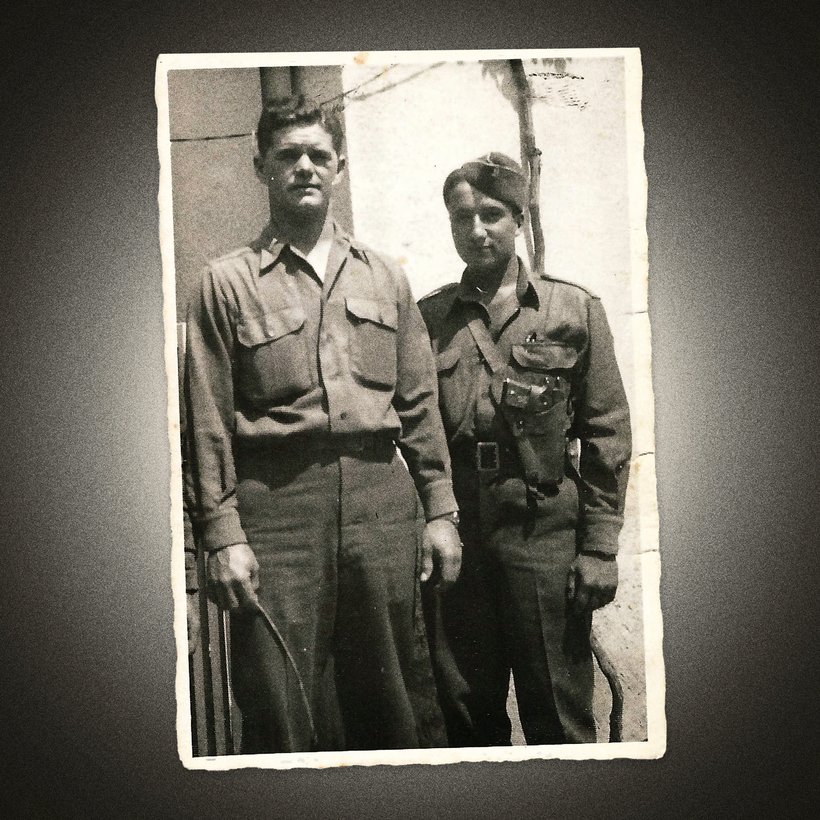What I knew at the outset was this: In 1945, my father, Eddie Willner, and his best friend, Mike, both German-Jewish teenagers, had just escaped from a death march heading from the Buchenwald concentration camp. Days later, they were found in the woods by a band of Allied frontline fighters—American tankers not much older than teenagers themselves. Although under strict orders not to jeopardize the battle momentum by stopping to aid refugees, the 23-year-old company commander looked over the two dying boys in blue-and-white striped uniforms and, recognizing that they were no ordinary refugees, said, “They’re with us now.”
And so, I embarked on a journey to uncover the rest of the story, which eventually became my book The Boys in the Light. It was a long and arduous research process that necessitated deep dives into archives in the U.S., Germany, Belgium, and Poland and a step-by-step retracing of key events. I visited the hometowns of all the central figures, walked through the death camps and the battlefields, and stood on the bridge that overlooked the river where my father and Mike had made their escape.
I scoured scores of eyewitness testimonies, tribunals, newspaper and magazine articles, and the company war diary. I sifted through the soldiers’ and survivors’ personal things: diaries, letters, personal mementos, memoirs. Poring over scrapbooks and photo albums, I found dozens of images that helped tell the story. Somewhere in the stacks, I always hoped to find a photo of my teenage father with those young American soldiers who had brought him back to life.
The highlight of my research journey was my conversations with my father, Mike, and the boys of Company D. Lieutenant Elmer Hovland, that young company commander who defied orders and took the two boys in, was a first-generation Norwegian-American from Luverne, Minnesota. A devout Christian, he kept his combat Bible close to his heart throughout the war. Charles Myers, from York, Pennsylvania, earned a reputation among the soldiers for his extraordinary knack in sniffing out danger.
There was “Redhead Fred” Headrick, a ginger-haired high-school dropout from Chattanooga, Tennessee, whose even temper and infectious cheerfulness even in the darkest moments of the war kept his fellow tankers from giving in to their fears. James “Baby Face” Vance, a quiet kid with soft cheeks and long eyelashes from Chickasaw, Mississippi, and one of the youngest in the company, was a thinker who constantly questioned the brutality of war. And finally there was the company cook, “Pepsi” De Cola, the son of Italian immigrants who ran a diner in Waltham, Massachusetts. Wily and wisecracking, his tender care for the two skeletal Jewish boys changed him, and them, forever.
My quest to find the full story of my father’s rescue took me six years. In that time, I discovered stories that surprised me, some that unnerved me, and others that lifted my soul. In the end, I had pieced together a remarkable, inspiring story of how two groups of young men, caught within forces of war and hatred, found each other by chance, and changed each other’s lives.
And, as luck would have it, I finally came across that picture I had been looking for. Tucked away among Lieutenant Hovland’s war things, set neatly inside the pages of his well-worn pocket war Bible, was a photograph of the lieutenant and my father. In the photo, Eddie, who had put on around 50 pounds in D Company’s care, wears a U.S. Army uniform and carries a .45 caliber pistol while helping the lieutenant to interrogate German prisoners.
Nina Willner is a former U.S. Army intelligence officer and a nonfiction author

